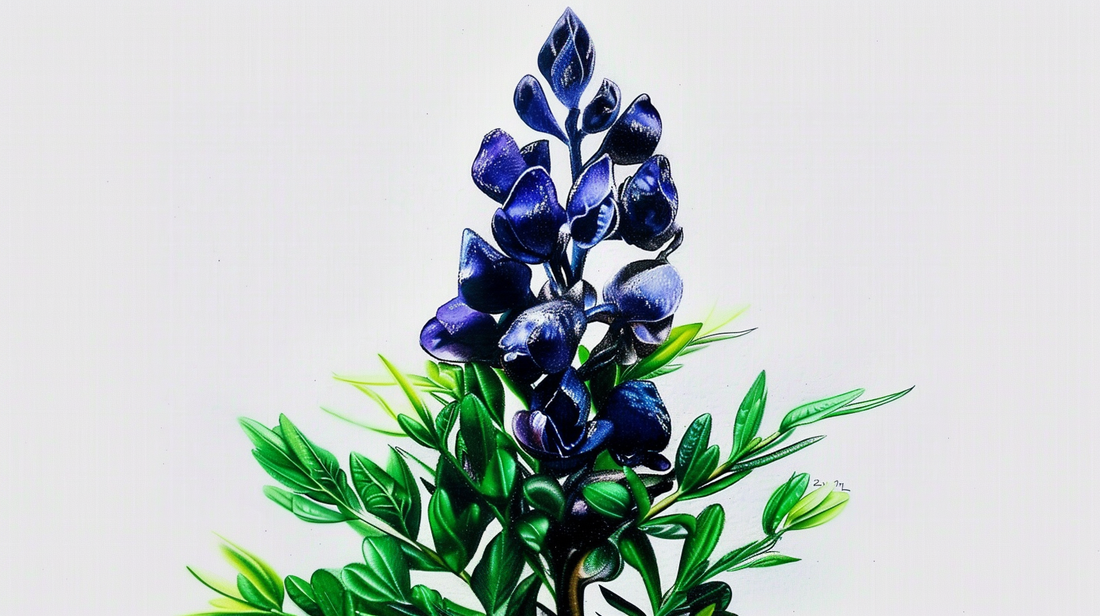
Aconitum pendulum Busch
Share
The Aconitum pendulum Busch belongs to a perennial herbaceous plant with an erect stem and a reversed conical tuber. The stem can reach a height of up to 100 centimeters, is hairless, and the leaves are shaped like a downy iron bar hammer. It is distributed across Tibet, the northwestern part of Yunnan, western Sichuan, Qinghai, southern Gansu, southern Shaanxi, and western Henan in China, thriving at altitudes of 2800-4500 meters on mountainous grassy slopes or forest edges. These regions are mostly high-altitude, cool temperate mountain areas, with annual rainfall typically exceeding 400 millimeters, average annual temperatures ranging from 0-5°C, and sunlight lasting between 1800-2800 hours.
The plant's stem is sparsely covered with recurved short soft hairs, and the leaves are dense, shaped like a downy iron bar hammer, with a string of purple flowers growing at the top of the main stem. Digging up its root, one would find one or two spindle-shaped, cylindrical roots with a dark brown color, which is the legendary "Aconitum pendulum Busch."

Pharmacological effects:
- Analgesic effect: It has a significant analgesic effect, with the main effective analgesic components being aconitine, 3-acetylaconitine, and deoxyaconitine, among others. The analgesic intensity is even higher than that of morphine.
- Anti-inflammatory effect: It has a significant inhibitory effect on various acute exudative edematous inflammations.
- Local anesthetic effect: Aconitine and 3-acetylaconitine both have significant local anesthetic effects, and are effective when administered intramuscularly or subcutaneously.
